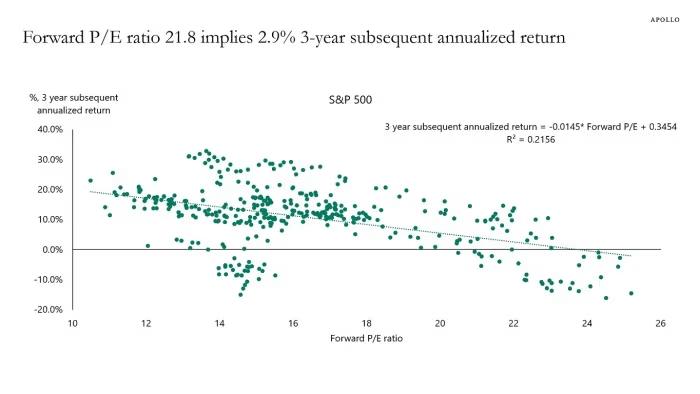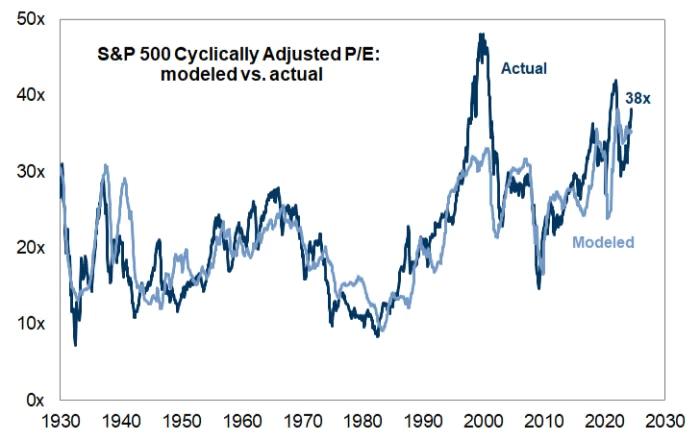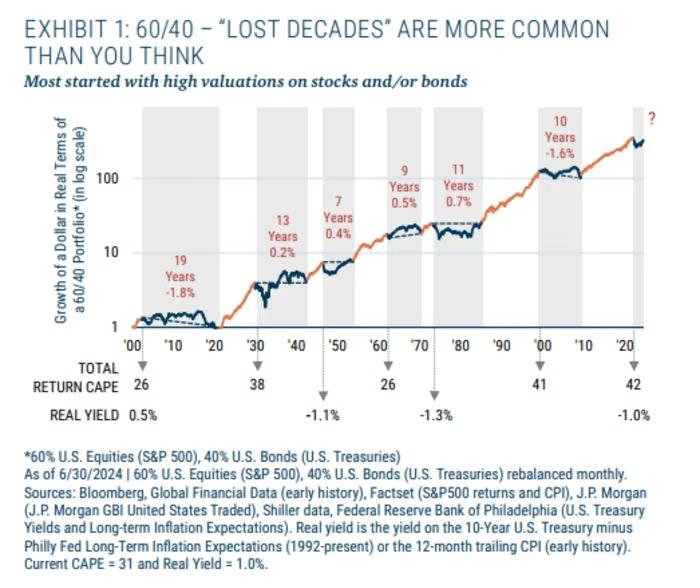Goldman Sachs Warns of Dismal S&P 500 Returns
A report from David Kostin, chief U.S. equity strategist at Goldman Sachs, recently added fuel to this discussion. Kostin cautioned that the S&P 500 could be heading for one of its weakest stretches of returns in nearly a century. His warning echoed earlier concerns from strategists at J.P. Morgan and GMO, as well as Apollo Global Management’s chief economist, Torsten Slok, who predicted that the S&P 500 might see average annualized returns of less than 3% over the next three years, based on current valuations.
Stocks have enjoyed an extraordinary run over the past decade, but the coming years may not be as promising. Increasingly, market experts are warning of a potential “lost decade,” where returns could fall well short of the gains investors have grown accustomed to over the past 15 years.

Kostin’s forecast is even more pessimistic, suggesting the S&P 500 could deliver average annual returns of just 3% over the next 10 years. This would significantly lag behind the average return of the past decade and would fall well below the long-term average since 1928. Goldman attributes this gloomy outlook to two main factors: elevated stock valuations and extreme market concentration.

Currently, the cyclically adjusted price-to-earnings (CAPE) ratio for the S&P 500 stands at 38 times forward earnings, a level not far from its dot-com bubble peak. Even more concerning is the unprecedented concentration in the market, with a handful of large companies holding significant weight in the index. According to Goldman, this level of concentration is the highest seen since the early 1930s.
High concentration has historically weighed on stock returns because dominant companies often struggle to maintain their competitive advantages over time. Kostin noted that, without this concentration, Goldman’s forecast for S&P 500 returns would be four percentage points higher.

In light of these risks, Goldman suggests that Treasurys could outperform the S&P 500 over the next decade, while the equal-weighted version of the index is also expected to outperform its capitalization-weighted counterpart.
Still, Kostin acknowledged that a few factors could improve the outlook. Stronger-than-expected productivity growth or corporate tax cuts could help support higher valuations and extend the market rally.

Another recent analysis, from GMO’s Ben Inker, highlighted that periods of poor returns, or “lost decades,” have been more common than many investors realize. These periods typically begin when both stocks and bonds are trading at high valuations, much like today.

While there are reasons for optimism—such as strong economic growth, falling inflation, and interest rate cuts—high valuations remain a point of caution. As Aya Yoshioka, portfolio consulting director at Wealth Enhancement, noted, “There are a lot of things to like about this market, but valuations aren’t one of them.”
Despite recent record highs, U.S. stocks slipped earlier this week, with the S&P 500 and Dow Jones retreating while the tech-heavy Nasdaq Composite edged higher.




